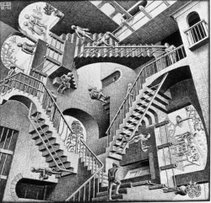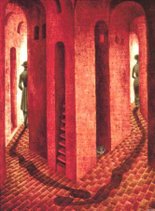 An endocentric construction (also known as a headed construction, where the head is contained "inside" the construction) is a grammatical construction that fulfills the same linguistic function as one of its constituents. It consists of an obligatory head and one or more optional, dependent words, whose presence serves to narrow the meaning of the head.
An endocentric construction (also known as a headed construction, where the head is contained "inside" the construction) is a grammatical construction that fulfills the same linguistic function as one of its constituents. It consists of an obligatory head and one or more optional, dependent words, whose presence serves to narrow the meaning of the head.Here, the word "head" refers to the morpheme that determines the category of a compound or the word that determines the syntactic type of the phrase of which it is a member.
The distribution of an endocentric construction is functionally equivalent, or approaching equivalence, to one of its member constituents, which serves as the centre, or head, of the whole.
Exocentric constructions are phrases and compound words which are not the same part of speech as their constituents. In an exocentric compound, the word class is determined lexically, disregarding the class of the constituents.
Endocentric compounds were called karmadhāraya, a type of compound in Sanskrit grammar.
Exocentric compounds are called bahuvrīhí (बहुव्रीहि, or bahuvrihi compounds). The term bahuvrihi was first used by Sanskrit grammarians, and is a specific Sanskrit example: a compound consisting of bahu ("much") and vrihi ("rice").
So, the distinction between endocentric and exocentric constructions is based on the question of an equivalence between the class of the construction as a whole and the class of any of its constituents.
Endocentric constructions are traditionally subdivided into two types: subordinative and coordinative. Subordinative ones have one centre and one other element subordinated to it, occurring as an optional extra, so to speak. In a coordinative construction, however, there are two or more independent centres with equal status; the more common type of coordinative construction there is, in addition to the centres, a marker of coordination, like and or or.
While the additive type of construction (with and) may involve a change of subclass, in that the coordinative construction is plural but may contain singular constituents, the alternative type (with or) and the appositive type maintain the subclass of their constituents.
Coordinative and subordinative constructions are so different that it is probably better to regard them as independent types alongside exocentric constructions, rather than as varieties of endocentric constructions.











No comments:
Post a Comment